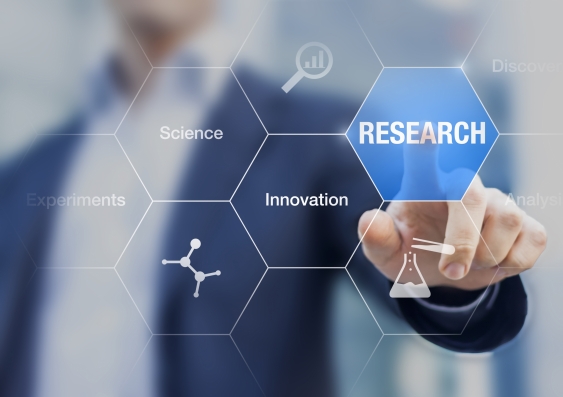UNSW Sydney awarded over $2.5 million in government funding for critical research
UNSW researchers have been awarded $2,571,992 across seven projects in the latest round of the government’s Australian Research Council (ARC) Linkage Grants.
UNSW researchers have been awarded $2,571,992 across seven projects in the latest round of the government’s Australian Research Council (ARC) Linkage Grants.

UNSW researchers have been awarded $2,571,992 across seven projects in the latest round of the government’s Australian Research Council (ARC) Linkage Grants.
UNSW received the most funding of any Australian university and the highest number of successful projects.
Teams led by researchers from UNSW Art & Design, Arts & Social Sciences, Engineering, and Science faculties, were awarded funds for a wide-range of research projects, including improvements to cochlear implant technology, high-tech ceramics, next-generation electronic memory storage and community engagement in Indigenous communities.
Minister for Education Dan Tehan said the government was providing $10.9 million for 25 new research projects, saying it is crucial that the government continues to fund world-leading research.
“The government continues to work with the higher education sector to minimise the financial impact of COVID-19 on higher education. We are aware that, like the rest of the Australian and global community, the university sector is not immune from the financial impact of the virus, and that it covers a breadth of people within its communities including professional staff, academics, casual staff, domestic students, and international students,” Mr Tehan said.
UNSW Deputy Vice-Chancellor (Research) Professor Nicholas Fisk said that he was impressed that UNSW-led projects had again attracted more Linkage funding than any other Australian university, which reflects the relationships our talented academics have forged with industry.
“Partnering with industry will be crucial to the national recovery from COVID-19, particulary important given the looming financial impact on both business and the university sector.” Professor Fisk said. “In this light, we are seeing a trend to more cashless contributions from industry partners, which suit SMEs and charitable/community organisations at the pointy end of the constrained economy”.
The funded projects lead by UNSW are as follow:
Professor Laura Poole-Warren from the Graduate School of Biomedical Engineering has been awarded $704,384 to expand our understanding of platinum dissolution in biomedical stimulating electrodes. Platinum is the main material used in electrodes for neurostimulators like the cochlear implant and can dissolve during implantation, affecting how they function. The project in collaboration with industry partner Cochlear Ltd aims to understand the chemical, electrical and biological factors that impact on platinum dissolution in electrodes. It will also develop new 3D models to simulate conditions in the human body for better testing, including reducing the need for animal experimentation.
Associate Professor Jennifer Biddle from UNSW Art & Design will receive $469,627 for her project Indigenous Futurity: Milpirri as Experimental Ceremony, which aims to develop a long-term research partnership between Warlpiri Indigenous knowledge holders, anthropologists and community arts industry partner Tracks Dance Company. The project will generate new knowledge of Milpirri song, dance, art and story through practice-based research, with benefit to both the industry partner and the Lajamanu community of increased community participation, outreach and impact.
Professor Charles Sorrell from Materials Science and Engineering has been awarded $406,100 to manufacture a novel form of zirconia - fully stabilised monoclinic zirconia. This product using waste and inexpensive raw materials could have widespread use in the chemical, refractory and mining industries. The technology also aims to expand (industry partner) Vecor Australia's commodity base from structural ceramics to high-tech ceramics. Benefits expected are greater use of waste and Australian raw materials, new commercialisation opportunities, new training and employment opportunities and breakthrough research.
Associate Professor Dewei Chu from Materials Science and Engineering will use $324,072 to develop high performance metal oxide inks for printable memory arrays. The project aims to develop next generation printable memory devices with low cost and excellent stability. The expected outcomes will be new electronic materials for a wide range of uses in flexible electronics, significant advances in energy efficient data storage devices, and commercialisation of the technology to Australian industries.
Associate Professor Peyman Mostaghimi from the School of Minerals and Energy Resources Engineering will receive $310,781 for in situ characterisation of coal from coal seam gas developments. His team aims to develop advanced methods for determination of coal properties required for partner Queensland Gas Company to optimise gas recovery, water management, and schedule future developments. Using massive data from 4D-imaging technology to predict the evolution of properties of different types of coals, the project will help future-proof Australia as the world’s largest exporter of natural gas. It will also provide significant benefit for the industry in satisfying domestic gas security, maintaining international commitments and addressing environmental concerns.
Professor Jeremy Moss from Arts and Social Sciences will use $191,374 awarded for his project A Just Climate Transition to develop a social justice framework for the implementation of a zero net emissions climate transition for rural Victoria. This will be the first comprehensive incorporation of a social justice framework with detailed mitigation strategies for rural Australia. The research will combine insights from leading Australian and international energy groups with current research, to produce valuable inputs into a national just transitions strategy. The project will significantly contribute to our understanding of a just climate transition and provide benefits to industry partners and the sector.
Dr David Rey from the School of Civil and Environmental Engineering will receive $165,654 to develop and deploy innovative methodologies for stable on-demand workforce management and fleet logistics, based on advanced decision-support systems. The project’s outcome will provide a new cloud-based real-time Optimisation Software-as-a-Service (OSaaS) platform that will allow businesses to improve their productivity while reducing operating costs and their environmental footprint. This is expected to support the manufacturing, retail, delivery and mobile fleet industries.